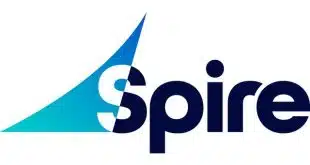By Jim Daly
Some merchant categories such as restaurants are moving slowly into EMV chip card acceptance ahead of the looming Oct. 1 liability shift because they experience little of the fraud EMV cards are intended to prevent, while others are going to find losses “winging back at them,” executives from merchant acquirer Heartland Payment Systems Inc. said recently. Meanwhile, Ingenico Group, a major point-of-sale terminal provider, reported a big lift in U.S. sales because of the EMV conversion.
Princeton, N.J.-based Heartland, which reported its second-quarter earnings Friday, has a big contingent of restaurants in its merchant portfolio. But restaurants “really are not very focused on, or particularly concerned by, the liability shift that occurs in October,” chief executive Robert O. Carr said in a conference call with analysts. “There isn’t a lot of counterfeit card usage at restaurants and such,” he said, according to a transcript of the call from Thomson Reuters StreetEvents.
EMV cards are much harder to counterfeit than the magnetic-stripe cards they’ll replace as part of the card networks’ coming liability shifts. Issuers today absorb counterfeit losses, but after Oct. 1 a merchant that doesn’t have an EMV-enabled POS terminal will be financially responsible for any such loss on a transaction if the consumer presents a chip card.
Consumer-electronics retailers and clothing and accessories merchants experience more counterfeit fraud than do restaurants and other merchants who sell goods that can’t be resold or returned. “That’s where the goods are most fenceable, so that’s where the bad guys will use the counterfeit cards must aggressively,” Heartland vice chairman Robert Baldwin said on the call.
Thus, merchants in those categories that haven’t upgraded their terminals won’t be pleased when they open their November statements, Baldwin predicted.
“The issuers are absorbing those losses [today],” he said. “All of a sudden, those are going to come winging back at them…when the statements for October hit, there is going to be a big surprise by certain categories. Others, like restaurants, it’s unlikely to be a dramatic impact.”
Heartland executives say the conversion will go on long after October. “The EMV implementation for POS systems is still very early innings, a little bit of a mess,” Carr said. “The complexities of the U.S. system, the number of players, the number of certifications is a real problem.”
Like its arch-rival VeriFone Systems Inc., France-based Ingenico is getting a big windfall from sales of EMV-enabled products thanks to the U.S. EMV liability shift. Ingenico chairman and chief executive Philippe Lazare said July 29 that U.S. revenues had increased 92% in 2015’s first half from the year-earlier period. Much of the growth was the result of merchants buying terminals equipped not only for EMV, but also near-field communication (NFC) contactless technology in order to process mobile payments, he said. POS-terminal makers like Ingenico and VeriFone, and many acquirers, are simultaneously promoting EMV upgrades and NFC to enhance security and enable merchants to capture the expected growth in smart-phone payments.
Ingenico doesn’t believe such huge U.S. growth will last, but the company clearly expects the EMV gravy train to roll on for some time. “Probably there will not be, again, 90% or 100%, but that there will still be a significant growth for us in the U.S. in the years to come,” Pierre-Antoine Vacheron, executive vice president of strategy, performance and finance, said in a conference call.
Ingenico reported revenues of 1.06 billion euros ($1.16 billion) in the first half. North America accounted for 132 million euros ($144.6 million), up 67% as reported and 40% on a constant-currency basis.





